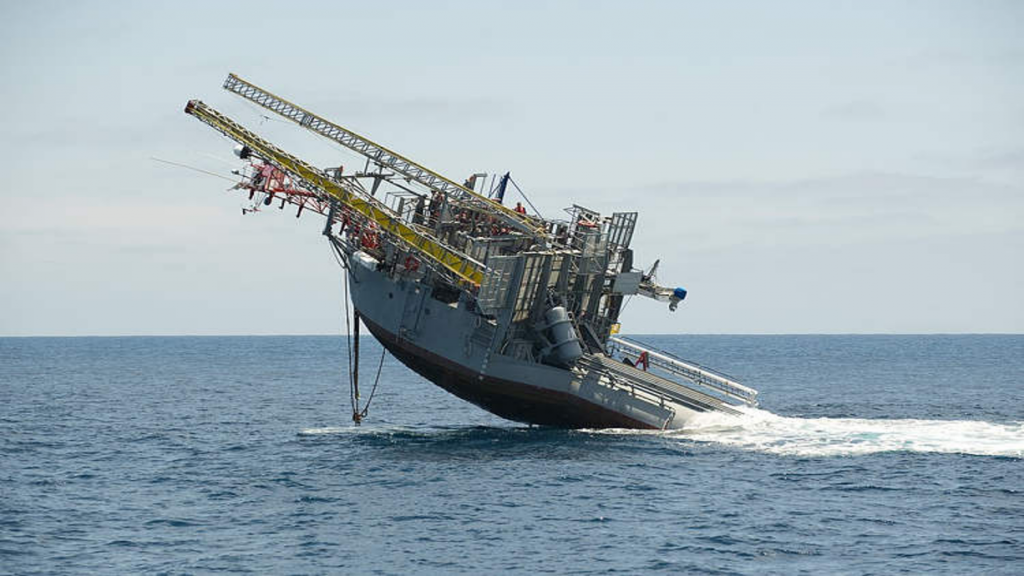The FLIP (floating instrument platform), owned by the U.S. Office of Naval Research, is a research platform that is unique in its design and capabilities. At 108 meters long, the FLIP is equipped to partially flood and pitch backward 90°, leaving only the 17-meter end above water in a vertical position. The bulkheads act as decks, providing a stable platform for research in the open ocean.
What sets the FLIP apart is its ballast system, which utilizes ocean water at depths below the influence of surface waves to make the platform act like a buoy. This means it is virtually immune to wave action, making it the perfect research platform for the kinds of studies that require stability in the open ocean. The FLIP’s hull is also designed to resist twisting, adding to its stability.
The concept for the FLIP platform was born in 1960, inspired by a conversation between researcher Frederick H. Fisher and the director of the Marine Physical Laboratory, Fred N. Spiess. Fisher complained about stability issues when using a submarine to conduct his research, leading Spiess to suggest upending a ship for more stability. This sparked a discussion about the feasibility of such a ship, and in 1962, the FLIP was launched by the Gunderson Brothers Engineering Company in Portland, Oregon.
The FLIP can either float freely in open waters or be moored to the bottom of the ocean at depths of up to 5,000 meters. The process of mooring takes an entire day and 50 tonnes of equipment. The platform can also flip from a horizontal to a vertical position in less than 30 minutes.
What makes the FLIP even more interesting is that it doesn’t have its means of propulsion due to the potential interference with its highly sensitive acoustic instruments. Instead, it must be towed by another vessel and can accommodate a crew of five and up to eleven scientists.
The FLIP’s unique ability to operate in both horizontal and vertical positions required interior customization, including 90-degree flipping toilet seats, curved shower heads, and overhead lights installed on dual-purpose surfaces. In addition, doors and hatches protrude from the floor, while portholes are on the ceiling.
The platform weighs about 700 tons and can accommodate a crew of five and up to eleven scientists. The stability of the FLIP is crucial for its research purposes, and no other platform offers a comparable level of stability in the open ocean except for submarines.
The FLIP provides scientists with a stable and exceptional platform for conducting experiments in both horizontal and vertical positions, thanks to its ability to flip easily and quickly and its buoyancy.

